Purchase Key Functional Exercises You Should Know – Gray Cook at BoxSkill, You can get access to all files. Direct Download Link and No costs are incurred (No Ads, No Waiting Time, No Capcha).
Not to interrupt your learning, you should download the course after getting the link.
Help Your Clients Improve in Less Time, and with Fewer Exercises
If you’re a trainer or corrective exercise specialist, do you know which functional exercises to use with your clients, and why?
Do you know how to tell if your client is doing it correctly?
Do you know which variations to use depending on your client’s specific needs and abilities?
Do you know how to make changes on the fly as your client’s needs change from week to week or workout to workout…or minute to minute?
Do you know which order to use and how to progress or regress different functional exercises?
Surprisingly, despite the popularity of functional exercise, many trainers and corrective exercise specialists are still unsure about the details of when, how and which functional exercises to use with their clients.
And because of this, they fail to maximize the limited training time their clients have, and fail to help them improve as quickly as they could.
Do you know which functional exercises to use to get maximum results in minimum time with your clients?
In Gray Cook Key Functional Exercises You Should Know, Gray Cook will show you how to use the right exercise to get results for your clients, in less time and with less work.
In our various backgrounds, many are using corrective exercise for fitness, sports performance and rehabilitation. As you think about that, you’ll realize the corrective exercise concept of improving movement dysfunction is standard, but those recipients are quite different.
Are you skilled enough to recognize those differences and implement a similar but different solution to each target group? Better yet, can you make changes on the fly as you work with individual client needs, and as those needs change from week to week or workout to workout…or minute to minute?
Tune in as Gray brings clarity to the corrective hierarchy. In this lecture, he’ll explain the differences between functional and corrective exercise. He’ll provide the goals of both, and describe what each is best for and the challenges they present.
Then he gives us his top exercise choices, those Key Functional Exercises You Should Know, and teaches us the order to use them—and why. For each of the these, the chop & lift, the deadlift and the Turkish getup, he details his favorite variations, the verbal instructions he uses, then moves to live demonstration with on-the-fly corrections. He’ll show you when to use them and how to modify them for each client.
As you watch your clients doing their corrective exercises today, do more than watch form. Ask yourself why you selected a particular exercise. What exactly is your goal for that exercise, for that person? Is it doing what you think it’s doing? Is it doing the same thing for your first client as it’s doing for the second?
These are the type of questions Gray proposes—and then answers—in this thought-provoking lecture.
Of course, form is important. But it turns out, that’s only the first step.
Knowing quality form when you see it, and being able to offer the perceptive corrections to trigger righting responses is the foundation of what Gray will teach you in this lecture. Then he’ll build on that to help you think through the deeper levels of how these exercises work, and why you’d use one exercise over another for each of your clients.
A firm grasp of these concepts will help you make a bigger difference for your clients. And that makes for a fulfilling day at work.
In Key Functional Exercises You Should Know, Gray Cook shows you how to use the right exercise, to get results for your client in less time, and with less work.
He brings clarity to the corrective hierarchy.
He gives the key exercises that stand out in a library of functional exercise options, and shows you when to use them, and how to modify them for your clients.
These exercises have changed Gray as a trainer, strength coach and physical therapist. And they will allow you to zero in on issues with precision, and fix them with less work and fewer exercises.
Get Results Quickly With These Three Gray Cook Key Functional Exercises
In the Gray Cook Key Functional Exercises You Should Know video, Gray will explore—
- His three key functional exercises: the chop and lift, the Turkish getup, and the deadlift
- The hierarchy of these exercises: which to work on first for the quickest results
- Gray’s favorite regressions and progressions on each exercise, and when to use each
- The subtle verbal coaching cues he uses to maintain correct alignment and stability through the movements
- What most people do incorrectly on the movements and how to coach and correct them (he coaches these in live demonstrations)
- and much more
You’ll walk away knowing how to use these key exercises as functional and corrective tools with your clients, and will never again be stuck using ineffective corrective exercises that don’t actually help your client improve.
You’ll have a deeper level of understanding of why and how these exercises work, which to use in each specific case, and how to modify the exercises to change the difficulty level or target area.
Don’t be left clueless about which functional exercises to use. Let Gray Cook show you the key functional exercises that will have your clients performing better in less time.
Knowing how to do an exercise doesn’t mean owning the art of teaching and coaching it well enough to change movement.
Gray also took questions throughout the course of the workshop, questions yelled at will whenever some brave soul got stumped on a concept. During the DVD, you’ll learn the answers to some of the questions you may have wondered but haven’t had the opportunity to ask. For example, questions like—
- Why do you use a high bridge in the Turkish getup? Is there ever a time when you wouldn’t?
- What is the preferred knee position for deadlifting?
- Do you have common options to modify the chop and lift?
- How do I know when a cable bar chop and lift is lined up correctly?
- What are key factors to look for before advancing the chop and lift from a cable bar to split handles or a rope?
- Do you have rules for range of motion or range limitation in the deadlift?
- Can you provide greater depth about exercises that require total engagement and a better explanation of self-limiting exercise?
- What is the FMS company line on asymmetry, even for asymmetrical athletes?
- What’s the difference between corrective exercise and functional exercise?
- Why did you call these exercises ‘key’? What’s so special about them?
- Can you explain how to use the FMS online exercise library?
- What are the rules for single-leg deadlifting?
- What functional patterns are represented in each of the key functional exercises?
- What is the role of the grip and the lats in the deadlift?
- Which modifications are key in the Turkish getup?
- How do I spot faulty form in the deadlift?
- How do I spot faulty form in the chop and lift?
- How do I spot faulty form in the Turkish getup?
- How and when do I progress from a corrective exercise to a functional exercise?
“I have never seen anything like when Gray speaks—he commands a room. You become captivated; the man knows his stuff inside and out. Gray is the KING of analogies and metaphors, making it much easier to truly understand how movement is key to performance and recovery.”
~ Perry Nickelston, Stop Chasing Pain
What’s Covered in the Presentation
Disc One
In Disc One, Gray lays the groundwork, explaining the place of functional exercise and corrective strategy in the wider picture of training. He also touches upon the basic philosophies, goals and mechanics of the Functional Movement Screen and how it can benefit both athletes and the general population.
Here’s what he covers (including transcript page references)—
- What to do as a strength coach if you want to impress an NFL coach. pg.1
- How Gray typically modifies people’s existing training programs. pg.2
- Why most of us know the 80/20 rule, yet struggle to apply it successfully in what we do as strength coaches. pg.2
- How people trained back in 1910, and why today’s population needs the same mindset now more than ever. pg.3
- The role of the trainer in the early 1900s. pg.3
- Re-engage proprioceptors to the hips, back and shoulders using this active rest exercise between sets of heavy squats on pg.3
- What most people think of when they hear ‘functional exercise,’ and what it ACTUALLY is. pg.3-4
- What type of athlete usually scores the higher on the FMS. pg.4
- Gray’s typical approach to training runners and triathletes. pg.4
- What Tim Ferriss, author of The 4-Hour Workweek, called Gray out of the blue, to ask about. pg.5-6
- The old way professionals used to apply functional exercise. pg.6
- Why corrective exercise strategy is only half the solution. pg.6
- The benefits of using self-limiting exercises. pg.7
- A self-limiting exercise alternative to running that works the cardiovascular system while requiring an upright posture. pg.7
- What to do if a functional exercise identifies a competency issue such as balance, asymmetry or limited range of motion. pg.8
- How well Tim Ferriss did on his first Functional Movement Screen. pg.8
- The difference between functional and corrective exercise. pg.9
- What the industry needs if it wants corrective exercise to be effective in restoring function in rehabilitation clients and athletes. pg.10
- Why you need to test the deep squat even if your athletes don’t do deep squats in sport. pg.11
- Why strengthening the core often isn’t enough to solve an inefficiency in the lunge, and what your approach should be. pg.11
- Stability vs mobility: which to work on first. pg.11
- The goal of the Functional Movement System. pg.12
- The first person you should screen when you learn how to conduct a Functional Movement Screen. pg.12
- The three issues you need to attack when resolving a dysfunction, and what order to tackle them. pg.13
- Which score ranges on the FMS indicate movement competence and readiness to pursue some level of performance and capacity. pg.13
- The seven FMS patterns. pg.14
- The FMS corrective hierarchy: which patterns to address first for the greatest improvement in the shortest amount of time. pg.14
- What to do instead of a mobility assessment to catch mobility problems. pg.15
- The goal of your first corrective exercise. pg.15
- What functional exercise is. pg.15
- The goal of functional exercise. pg.15
- The difference between training prime movers and training stabilizers like the pelvic floor, rotator cuff and transverse abdominus. pg.16
- A squat pattern demonstrated by a six-month-old. pg.16
- The problem with training on machines like the leg press and the Smith machine. pg.16-17
- How useful the functional movement screen is to people who only care about losing fat. pg.17
Disc Two
In Disc Two, Gray goes through the chop and lift and the deadlift. He explains their benefits, how to coach and modify these for your clients, and shows demonstrations of both being performed.
Here’s what he covers (including transcript page references)—
- The two upper- and lower-body PNF patterns, and how they’re combined on the chop and lift movements. pg.18
- Chop and lift: which people are naturally weaker in, and why. pg.18
- What’s better for training shoulders? Chopping and lifting first and then deadlifting, or the other way round? pg.19
- How babies strengthen their serratus—most adults use side planks and the quadruped diagonals, mistakenly thinking they’re exercising the serratus. pg.19
- The mistake people with tight hip flexors make with the chop movement. pg.19
- What you should be trying to do the first time you get your client to do a chop or lift. pg.20
- How to confidently introduce corrective strategy to your clients. pg.20
- The two functional patterns involved in the half-kneeling chop. pg.21
- The important element of shoulder training that most people miss. pg.20-21
- The three functional patterns involved in the tall-kneeling chop. pg.21
- How to identify asymmetrical deficiencies in chopping. pg.21
- How to position the back feet on the chop to accurately see what’s going on at the hip. pg.21
- Which side of the body to chop to when in the half-kneeling position. pg.22
- Why a cable bar is used on the chop and lift—this is the same reason people get back pain the day after paddling, raking leaves or shovelling if they haven’t done it in awhile. pg.22
- What cable attachment to use on the chop and lift for golfers, tennis players or baseball players. pg.22
- The advantage of using a cable pulley system with the chop and lift. pg.22
- The advantage of using bands for the chop and lift. pg.22
- How to make a medicine ball exercise more challenging without going up in weight. pg.22
- What to focus on when doing medicine ball exercises. p.23
- How to tell if you’re using enough resistance on the chop and lift. pg.23
- What equipment to use to do the chop and lift if you’re working with a small group, or have a person doing it at home as supplementation. pg.23
- What simple equipment to use for the chop and lift to ensure that the hip stays stable. pg.23
- Chops vs. lifts: Which to work on first. pg.24
- Gray’s approach to rehabilitating a football player who had a complete shoulder reconstruction: what he checked, what exercises he used, and his amazing result over five sessions spanning two and a half weeks. pg.24
- How to approach training and rehabilitation of isolated deficits. pg.24
- A great coaching cue for the lift. pg.24
- For the lift, which hand to to use to push, and which hand to use to pull. pg.24
- Which functional patterns are involved in the half-kneeling lift. pg.25
- Which functional patterns are involved in the tall-kneeling lift. pg.25
- How far to keep the weight away from the body on the lift. pg.25
- A live demonstration of Gray coaching the lift. pg.25
- Simple ways to make the lift more challenging. pg.25-26
- The right way to think of sets and reps for the lift. pg.26
- One of the best pieces of feedback you can give your client on the lift. pg.26
- When it’s okay to go up in weight on the lift. pg.27
- Which lift position to focus on if the biggest issues involve asymmetrical hip position. pg.27
- Tall-kneeling vs half-kneeling: which to use for more bang for your buck. pg.27
- How to challenge different parts of the body on the chop and lift. pg.27-28
- How weight should be distributed between both feet in the half-kneeling stance. pg.29
- What the rotary stability test actually checks. pg.29
- What to try if your client struggles to get into the half-kneeling position to do a chop or lift. pg.29
- Why the deadlift is so vital, for everyone from athletes to the elderly. pg.30
- The advantages that deadlifting has over other movements like the squat or the lunge. pg.30
- Correct deadlift technique: where the bar should be, what tension should be in the knees, and how the knees should be positioned. pg.31
- Which functional patterns are involved in the double-leg deadlift. pg.31
- The difference between a one-arm and a two-arm deadlift. pg.32
- What to investigate if your client has a hard time managing a bottom-up kettlebell on one side. pg.31-32
- Which functional patterns are involved in the single-leg deadlift. pg.32
- When to use a double-arm load, and when to use a single-arm load on the deadlift. pg.32
- Which two movement competency tests you need to clear before doing the deadlift. pg.32
- Which arm should be holding the weight on a single-arm, single-leg deadlift. pg.32
- Why you shouldn’t be too quick to blame the glute medius if you identify asymmetries on the single-leg deadlift, and what to investigate as well. pg.33
- The piece of kettlebell coaching advice Pavel Tsatsouline gave to Gray Cook after a three-day RKC. pg.33
- Gray does a live deadlift coaching demonstration on an audience volunteer. pg.33-34
- A coaching cue to engage the lats on the deadlift. pg.34
- How the body should feel if you’ve correctly set up the deadlift starting position. pg.34
- Does the shoe give enough support when deadlifting? How much weight the average men’s shoe is designed to support. pg.35
- Is there really a safety issue in deadlifting barefoot? pg.35
- The correct chest position in the deadlift. pg.36
- The difference between the Romanian deadlift and the deadlift, and which is more suitable for most people. pg.36
Disc Three
In Disc Three, Gray discusses the Turkish getup, and coaches a live demonstration by Dr. Mark Cheng. Gray also has a Q&A time at the end.
Here’s what he covers (including transcript page references)—
- Why the Turkish getup requires more stability than most other exercises. pg.37
- How the Turkish getup can help get your clients stronger in other lifts. pg.37
- Your role as a coach when taking clients through the getup, chop and lift, and deadlift. pg.38
- Two books about improving performance that you should read. pg.38
- Dr. Mark Cheng demonstrating a perfect getup. pg.38-40
- The mistake people make when loading the getup. pg.39
- Clients can’t do a getup yet? Four getup progressions. pg.40-41
- What novices do wrong with their shoulders on the getup. pg.41
- What to do if you can ascend okay on the turkish getup, but seem to lose it on the way down. pg.41-42
- Should your straight leg always stay on the ground on the getup? See pg.42
- The appropriate position of the hand when transitioning from the elbow to the tall sit on the getup. pg.42
- Why the Turkish getup can create mental fatigue even when compared to other exercises that allow you to go heavier. pg.43
- Is it okay for athletes who compete in sports that require asymmetrical movements like throwing, kicking, passing and swinging to have asymmetries on the FMS movements? See pg.44
- Is there a disadvantage to bridging on the way down in the getup? Mark Cheng’s answer on pg.45
- Is it okay to do the the getup with the fist to the floor instead of hand to the floor if your client has wrist pain? Gray’s answer and another alternative to try on pg.45
- The advantages of using a straight bar over a trap bar on the deadlift. pg.46
- Single kettlebell vs. double kettlebell: which Gray uses with his clients on the deadlift, and when. pg.46
- Do you need to have a ‘2’ or better on the active straight-leg raise before deadlifting? Gray’s answer on pg.47
Gray Cook Key Functional Exercises Get Your Copy Today
If you want your athletes and clients to maximize their training time and make improvements as quickly as possible, let Gray Cook show you how to use the key functional exercises they need to perform at a better level.
Get Key Functional Exercises You Should Know – Gray Cook, Only Price 35
Tag: Key Functional Exercises You Should Know – Gray Cook Review. Key Functional Exercises You Should Know – Gray Cook download. Key Functional Exercises You Should Know – Gray Cook discount.functional exercises at home functional exercises definition functional exercises for seniors functional exercises for runners functional exercises for elderly functional exercises meaning
Buy the Key Functional Exercises You Should Know – Gray Cook course at the best price at Boxkill. After your purchase, you will get access to the downloads page. You can download all the files associated in your order at here and we will also send a download notification email via your mail.
Unlock your full potential with Key Functional Exercises You Should Know – Gray Cook courses. our courses are designed to help you excel.
Why wait? Take the first step towards greatness by purchasing Key Functional Exercises You Should Know – Gray Cook courses today. We offer a seamless and secure purchasing experience, ensuring your peace of mind. With our trusted payment gateways, Stripe and PayPal, you can confidently complete your transaction knowing that your financial information is protected.
Stripe, known for its robust security measures, provides a safe and reliable payment process. With its encrypted technology, your sensitive data remains confidential throughout the transaction. Rest assured that your purchase is protected.
PayPal, a globally recognized payment platform, offers an additional layer of security. With its buyer protection program, you can feel confident in your purchase. PayPal ensures that your financial details are safeguarded, allowing you to focus on your learning journey.
Is it secure? to Use of?
- Your identity is completely confidential. We do not share your information with anyone. So it is absolutely safe to buy the Key Functional Exercises You Should Know – Gray Cook course.
- 100% Safe Checkout Privateness coverage
- Communication and encryption of sensitive knowledge
- All card numbers are encrypted using AES at relaxation-256 and transmitting card numbers runs in a separate internet hosting atmosphere, and doesn’t share or save any data.
How can this course be delivered?
- After your successful payment this “Key Functional Exercises You Should Know – Gray Cook course”, Most of the products will come to you immediately. But for some products were posted for offer. Please wait for our response, it might take a few hours due to the time zone difference.
- If this happens, please wait. The technical department will process the link shortly after. You will receive notifications directly by e-mail. We appreciate your wait.
What Shipping Methods Are Available?
- You will receive a download link in the invoice or YOUR ACCOUNT.
- The course link always exists. use your account to login and download the Key Functional Exercises You Should Know – Gray Cook course whenever you need.
- You only need to visit a single link, and you can get all the Key Functional Exercises You Should Know – Gray Cook course content at once.
- You can do your learning online. You can be downloaded for better results and can study anywhere on any device. Make sure your system does not sleep during the download.
How Do I Track Order?
- We always notice the status of your order immediately after your payment. After 7 days if there is no download link, the system will automatically complete your money.
- We love to hear from you. Please don’t hesitate to email us with any comments, questions and suggestions.
You must be logged in to post a review.
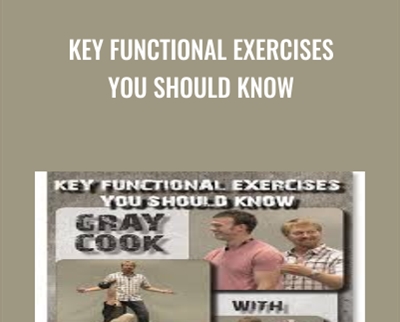

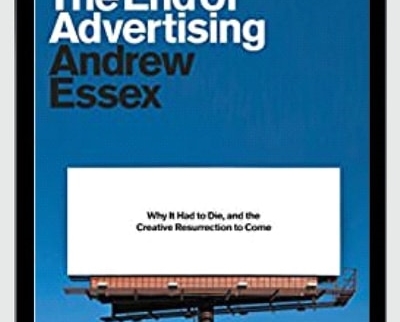
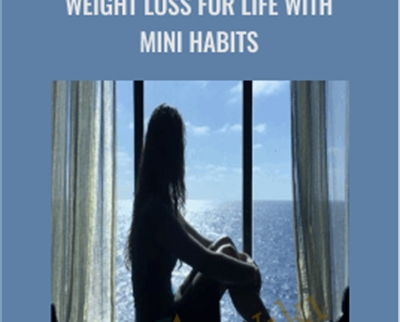



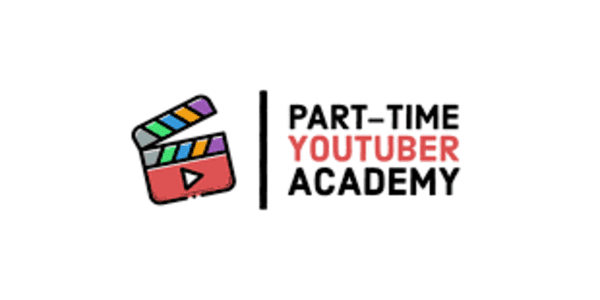

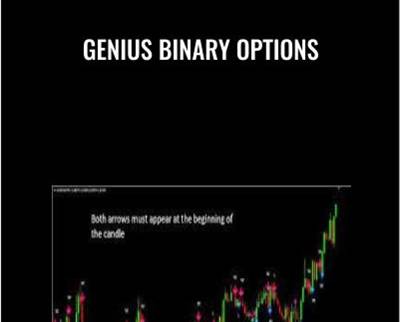

Reviews
There are no reviews yet.